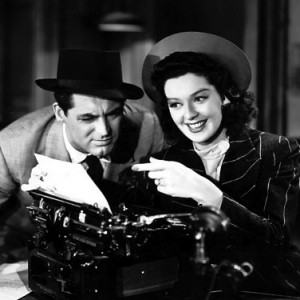 At the beginning of the 1950 essay in which he lays out his famous “Turing test,” Alan Turing tells us that, before we can imagine a machine thinking like a human, we have to imagine a man thinking like a woman. Convincing artificial intelligence might not look so different, he says, than “the imitation game”: a person in one room asks questions of a man and a woman sitting in another; their answers are passed back anonymously and type-written, and the asker attempts to guess which responder is male and which is female. Take away the man and the woman, replace them with a computer, and you have the Turing test: a human chatting with a machine, trying (and hopefully failing) to figure out its identity.
At the beginning of the 1950 essay in which he lays out his famous “Turing test,” Alan Turing tells us that, before we can imagine a machine thinking like a human, we have to imagine a man thinking like a woman. Convincing artificial intelligence might not look so different, he says, than “the imitation game”: a person in one room asks questions of a man and a woman sitting in another; their answers are passed back anonymously and type-written, and the asker attempts to guess which responder is male and which is female. Take away the man and the woman, replace them with a computer, and you have the Turing test: a human chatting with a machine, trying (and hopefully failing) to figure out its identity.
The fact that gender performance is at the foundation of Turing’s hugely important treatise is a common, if interesting point often taken up by academics. However, we can push this farther, and consider specifically the importance of gendered play. Strangely, Turing prescribes different strategies for men and women when they’re being questioned. The man’s object is “to try and cause [the asker] to make the wrong identification.” He should be deceitful, and answer questions as he thinks a woman would — answering a question about his appearance, to cite Turing’s example, by saying that he has long hair. As for a woman, “the best strategy for her is probably to give truthful answers.” She should be honest about herself, not try to ventriloquize her male counterpart. We know that the questioner wins if he guesses correctly, but whether the man and woman are collaborating toward their own win-condition (that he fail) is unclear.
Two types of gendered play stand out here: different gameplay styles based on gender, and players playing at being different genders. The male player answers his questions in a kind of linguistic drag. Here, we think of cybersex, or even multi-player games, in which men take on female speech patterns to complete their virtual female personas. Simultaneously, the female player must perform sincere femininity. We could imagine a question like, “Do you prefer wearing pants or skirts?”; even if the female player preferred skirts, figuring out the right “truthful” answer for her sex takes a moment of reflection, hyper-correction, and self-sculpting.
As for the gendered play styles — male deceit vs. female sincerity — they’re simultaneously sexist, confusing (why aren’t those strategies reversed? why not use different strategies?), and surprisingly in line with our contemporary stereotypes of men vs. women players. The male respondent is the griefer, the trickster, using lies to throw off his opponent, aggressively striving to win. The female respondent, by contrast, has put much more of herself into the game (in this case, literally, descriptions of her real self); she answers by the book, trusting in the system to facilitate a meaningful play experience, and gives her responses in the spirit of cooperation, not competition. A closer look at the published data on “real-life” gendered play experiences would help flesh out the comparison.
We could also ask ourselves about the importance for Turing of a game as such. Why not a simple gender-swap performance to illustrate how computers imitate humans? What is it that’s ludic about attempting to understand each other through language, and what does it mean to “win” the game of gender? We could also think more about how drag, specifically male-to-female drag, somehow underlies our thinking about the man/machine divide. Plus, there’s the question of female “authenticity,” and whether a machine that passes the Turing test also passes — as we might say of a someone transgendered. Ok, new idea for an actual-proper-essay: “‘Passing’ the Turing Test: Drag Performance at the Boundary of Man and Machine.”


I also wonder about how Turing’s experience of the closet plays into this. Is that why he thinks of the male “player” as the deceitful one? Does it have something to do with the structure of the test itself, i.e., the idea that a key test of a computer being equal to a human is the ability to trick a human; to pass?
If we want to play the biography card, things get even more complicated when we consider that Turing faced this question of being deceitful vs. authentic head on when he was court mandated to start hormone treatment to “correct” his same sex interests…